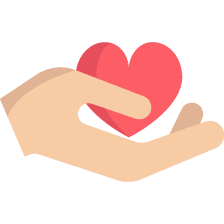Stroke
Stroke is the leading cause of adult disability, and the third leading cause of death.
A stroke is a sudden loss of brain function caused by a blockage in a blood vessel (ischemic stroke) or a rupture in a blood vessel (hemorrhagic stroke). The interruption in blood flow prevents oxygen from reaching the brain, causing cells to die.
The effects of a stroke depend on which cells are damaged. One-third to two-thirds of stroke survivors need rehabilitation for a loss of physical or cognitive function or difficulty with communication skills. Stroke is the leading cause of adult disability, and the third leading cause of death.
A stroke is a medical emergency. If you think someone may be having a stroke, call 9-1-1 right away. Acting quickly could save the person’s life and prevent lasting disability.
Signs and symptoms of a stroke for both men and women include:
- Weakness on one side of the body, or numbness or tingling in the face, arm or leg
- Trouble speaking (slurring or strange speech ) or understanding what others say
- Vision problems in one or both eyes , or double vision
- Headache that is sudden, severe or unusual
- Dizziness, coordination or balance problems
Risk factors for stroke
Stroke and heart disease share many of the same risk factors. There are two types of risk factors: those we can’t change (non-modifiable) and those we can change (modifiable). According to Heart & Stroke, eight out of 10 cases of premature heart disease and stroke are preventable with healthy lifestyle behaviours.
Non-modifiable risk factors
- Age: The risk of both heart disease and stroke increases with age. Two-thirds of strokes happen in people over age 65.
Modifiable risk factors
- Smoking: Smoking (or long-term exposure to second-hand smoke) significantly increases the risk of heart disease and stroke
- Being overweight or obese: Carrying too much weight raises your risk of several diseases, including heart disease and stroke.
- Lack of exercise: You can reduce your risk of heart disease and stroke by exercising regularly. (Learn more about Canada’s physical activity guidelines.)
- Eating an unhealthy diet: Aim for a diet low in saturated fat, trans fats, sodium and cholesterol, and high in fruits and vegetables. (Learn about healthy eating with Canada’s food guides.)
Bayshore is pleased to provide health information to our clients and their families and caregivers. This information is not medical advice and should not be treated as such. For more information on heart and stroke, please consult your doctor.
Additional Resources
Heart & Stroke
https://www.heartandstroke.ca/
This Canadian organization works to prevent disease, save lives and promote recovery through research, health promotion and public policy. Its website offers health information, including ideas for positive lifestyle changes.

Not sure? Let us help
Use our interactive care planner to help find the right care for you or your loved one.
Learn MoreMy ill husband has had the pleasure of having your awesome staff come to our home to care for him. They are all so friendly and very compassionate, and extremely diligent. They never hesitate when I call with a problem.
Wife of Client in Hamilton, ON
